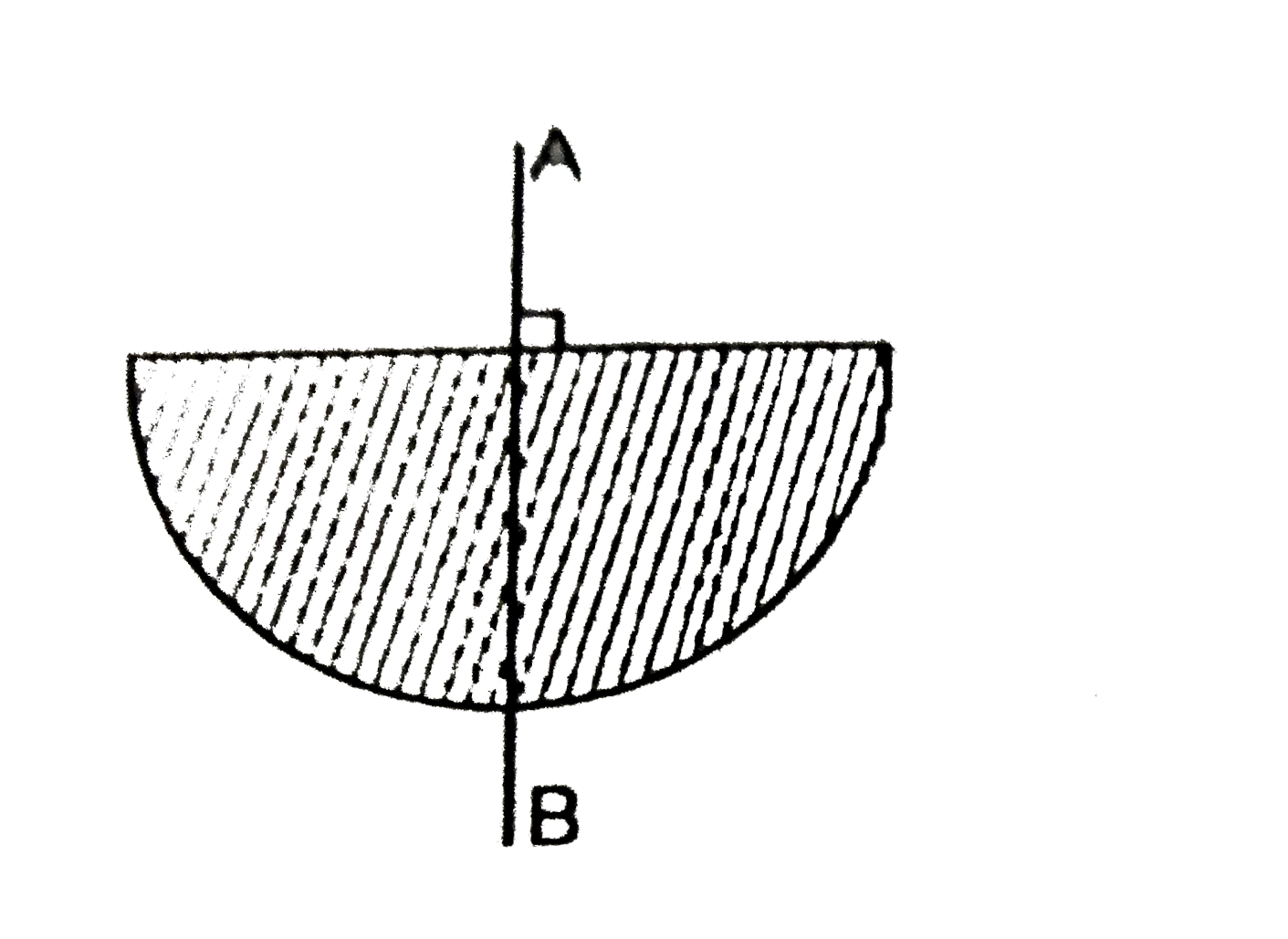Calculate the moment of inertia of a : (a)Disc about an axis passing through its edge and perpendicular to the circular base of the disc. (b) Solid sphere about an axis touching the sphere at its surface?
To calculate the moment of inertia for the given scenarios, we will use the parallel axis theorem and known formulas for moment of inertia.
(a) Moment of Inertia of a Disc about an Axis Passing through its Edge and Perpendicular to the Circular Base
Step 1: Identify the parameters
- Let the mass of the disc be M.
- Let the radius of the disc be R.
Step 2: Moment of Inertia about the Center of Mass
- The moment of inertia of a disc about an axis passing through its center and perpendicular to its plane is given by:
ICM=12MR2
Step 3: Apply the Parallel Axis Theorem
- The parallel axis theorem states:
I=ICM+Md2
where d is the distance from the center of mass to the new axis. Here, d=R (the radius of the disc).
Step 4: Substitute the values
- Substitute ICM and d into the equation:
I=12MR2+MR2
I=12MR2+22MR2=32MR2
Final Result for Part (a):
I=32MR2
---
(b) Moment of Inertia of a Solid Sphere about an Axis Touching the Sphere at its Surface
Step 1: Identify the parameters
- Let the mass of the sphere be M.
- Let the radius of the sphere be R.
Step 2: Moment of Inertia about the Center of Mass
- The moment of inertia of a solid sphere about an axis passing through its center is given by:
ICM=25MR2
Step 3: Apply the Parallel Axis Theorem
- The distance d from the center of the sphere to the new axis (which touches the sphere at its surface) is equal to the radius R.
Step 4: Substitute the values
- Substitute ICM and d into the equation:
I=ICM+Md2
I=25MR2+MR2
I=25MR2+55MR2=75MR2
Final Result for Part (b):
I=75MR2
---
- Let the mass of the disc be M.
- Let the radius of the disc be R.
- The moment of inertia of a disc about an axis passing through its center and perpendicular to its plane is given by:
ICM=12MR2
- The parallel axis theorem states:
I=ICM+Md2
where d is the distance from the center of mass to the new axis. Here, d=R (the radius of the disc).
- Substitute ICM and d into the equation:
I=12MR2+MR2
I=12MR2+22MR2=32MR2
I=32MR2
- Let the mass of the sphere be M.
- Let the radius of the sphere be R.
- The moment of inertia of a solid sphere about an axis passing through its center is given by:
ICM=25MR2
- The distance d from the center of the sphere to the new axis (which touches the sphere at its surface) is equal to the radius R.
- Substitute ICM and d into the equation:
I=ICM+Md2
I=25MR2+MR2
I=25MR2+55MR2=75MR2
I=75MR2
Similar Questions
Knowledge Check
- Question 1 - Select One
The moment of inertia of a circular disc about an axis passing through the circumstances perpendicular to the plane of the disc is
A(MR2B32MR[^(2)CMR22D54MR2 - Question 2 - Select One
The moment of inertia of a copper disc, rotating about an axis passing through its centre and perpendicular to its plane
Aincreases if its temperature is increasedBchanges if its axis of rotation is changedCincreases if its angular velocity is increasedDboth (a) and (b) are correct - Question 3 - Select One
The moment of inertia of a sphere of radius R about an axis passing through its centre is proportional to-
AR2BR3CR4DR5
Calculate the moment of Inertia of a semicircular disc of mass M and radius R about an axis passing through its centre and perpendicular to its plane.
View SolutionDerive an expression for moment of inertia of a thin circular ring about an axis passing through its centre and perpendicular to the plane of the ring.
View SolutionThe moment of inertia of a circular disc about an axis passing through its centre and perpendicular to the plane is 4kgm2 . Its moment of inertia about the diameter is
View SolutionThe moment of inertia of a disc an axis passing through its centre and perpendicular to its plane is I kg m2 . Its moment of inertia about an axis coincident with the tangent to it is
View SolutionA uniform semicircular disc of mass 'm' and radius 'R' is shown in the figure. Find out its moment of inertia about.
(a) axis 'AB'( shown in the figure 0 which passes through geometrical centre and lies in the plane of the disc
(b) axis 'CD' which passes through its centre of mass and it is perpendicular to the plane of the disc.
 View Solution
View Solution

